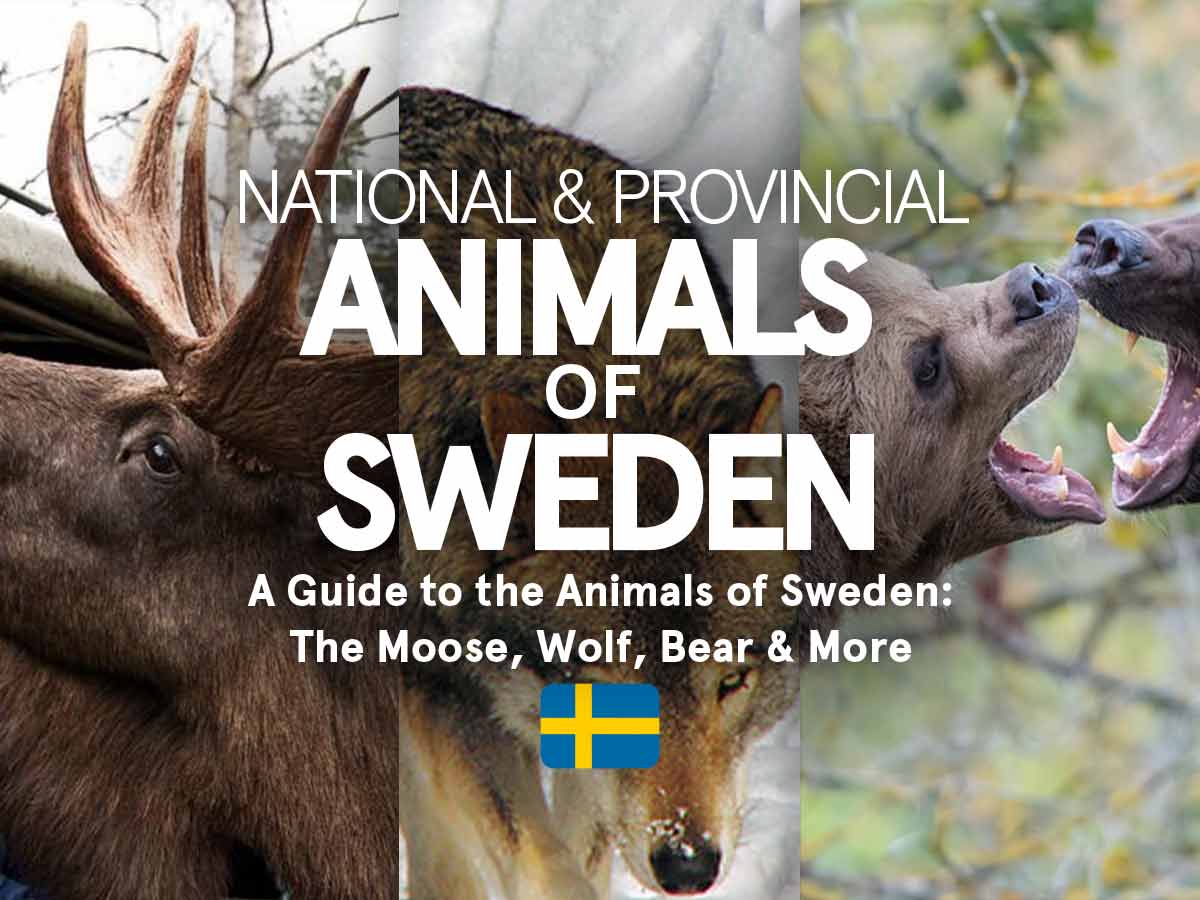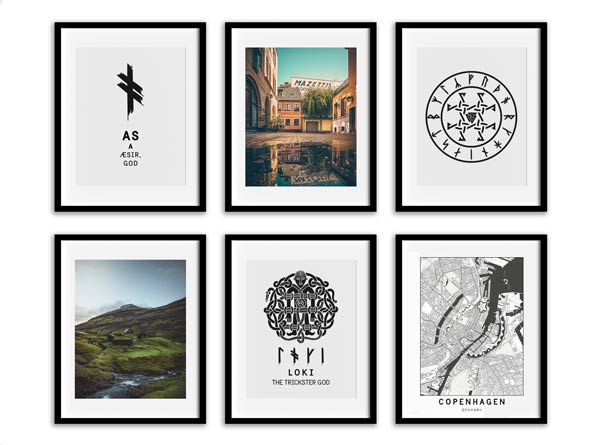Did you know that Sweden doesn’t have a formally established national animal? Still, we do have an animal—the moose—as our most commonly used national symbol, as well as actually established official animals associated with each of the 25 Swedish provinces (landskap), which includes animals such as the wolf, brown bear, lynx, arctic fox, and more.
So let’s dive right in and learn more about the animals of Sweden; first of all, the iconic national symbol that is the Swedish moose, and then each of the 25 provincial animals!
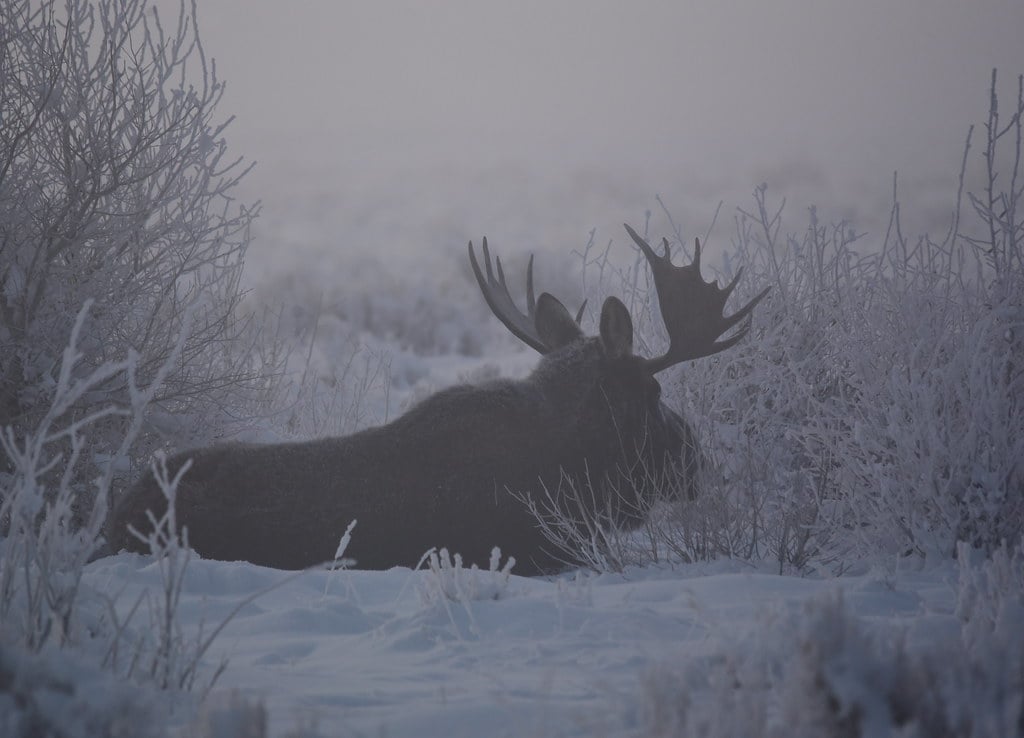
- What is the National Animal of Sweden?
- The Moose: A Swedish National Symbol & Unofficial National Animal
- What is the National Bird of Sweden?
- All the Provincial Animals (Landskapsdjur) of Sweden
- Blekinge: Stag Beatle (Ekoxe)
- Bohuslän: Harbor Seal (Knubbsäl)
- Dalarna: Eagle-Owl (Berguv)
- Dalsland: Raven (Korp)
- Gotland: Hedgehog (Igelkott)
- Gästrikland: Western Capercaille (Tjäder)
- Halland: Salmon (Lax)
- Hälsingland: Lynx (Lodjur)
- Härjedalen: Brown Bear (Brunbjörn)
- Jämtland: Moose (Älg)
- Lapland: Arctic Fox (Fjällräv)
- Medelpad: Forest Hare (Skogshare)
- Norrbotten: Siberian Jay (Lavskrika)
- Närke: Hazel Dormouse (Hasselmus)
- Skåne: Red Deer (Kronhjort)
- Småland: Otter (Utter)
- Södermanland: The Sea Hawk (Fiskgjuse)
- Uppland: The White-tailed Eagle (Havsörn)
- Värmland: Wolf (Varg)
- Västerbotten: Eurasian Curlew (Storspov)
- Västergötland: Crane (Trana)
- Västmanland: Roe Deer (Rådjur)
- Ångermanland: Beaver (Bäver)
- Öland: Nightingale (Näktergal)
- Östergötland: Mute Swan (Knölsvan)
What is the National Animal of Sweden?
Sweden does not formally have a national animal, but the closest thing we have is no doubt the moose—also known as the elk—which is considered one of the most prominent national symbols of Sweden, and revered all over the country.
The moose has overwhelmingly been voted the unofficial national animal of Sweden multiple times, ranging from in public radio (SR P1), on a website for safe hunting practices (Jaktkritikerna), and by Swedish people in general on online forums (r/sweden on reddit).

The Moose: A Swedish National Symbol & Unofficial National Animal
So even though Sweden hasn’t formally decided on a national animal—such as the American bison and bald eagle, or the Canadian beaver for example—Swedes overwhelmingly agree that the moose is our most beloved animal, as well as a national symbol.
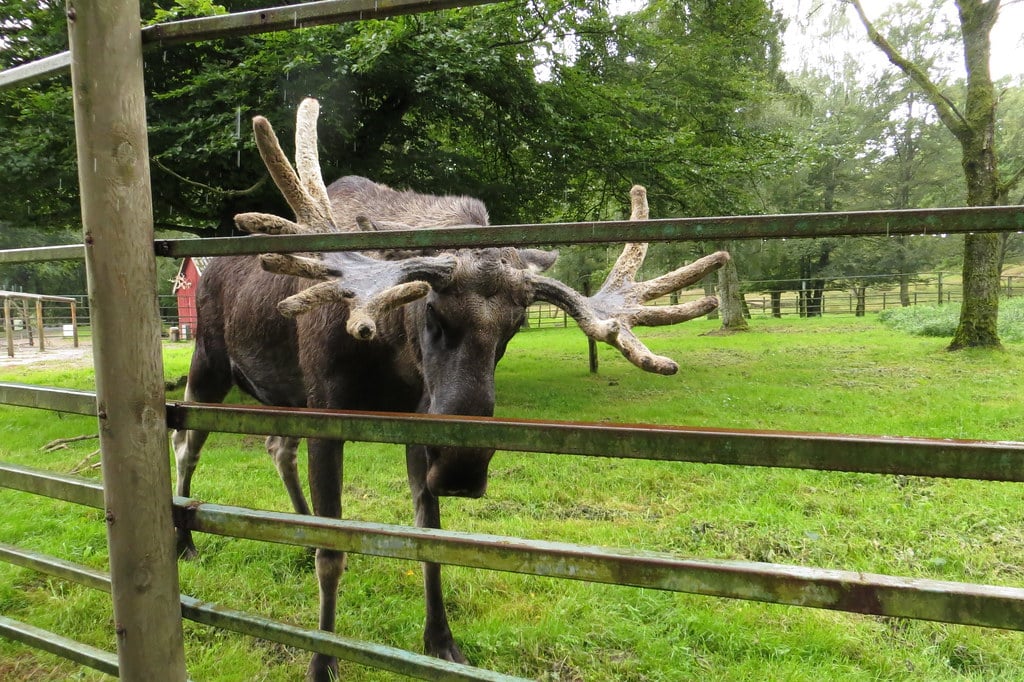
The moose is by far the most prominent national symbol of Sweden, the largest member of the deer family, and a majestic animal weighing in at up to 1 800 pounds (or around 8-9 adult men).
I’ve encountered moose both out in the wild and in animal parks many in my life, and every time it has been an almost spiritual experience.
The majestic creature has an almost mythical aura around, and practically exudes strength and endurance. It is commonly called the “King of the Forest” because of its size and crown-like horns, and has a tendency to roam across gigantic areas where it is generally unthreatened (except against humans and wolves who both like to hunt it).
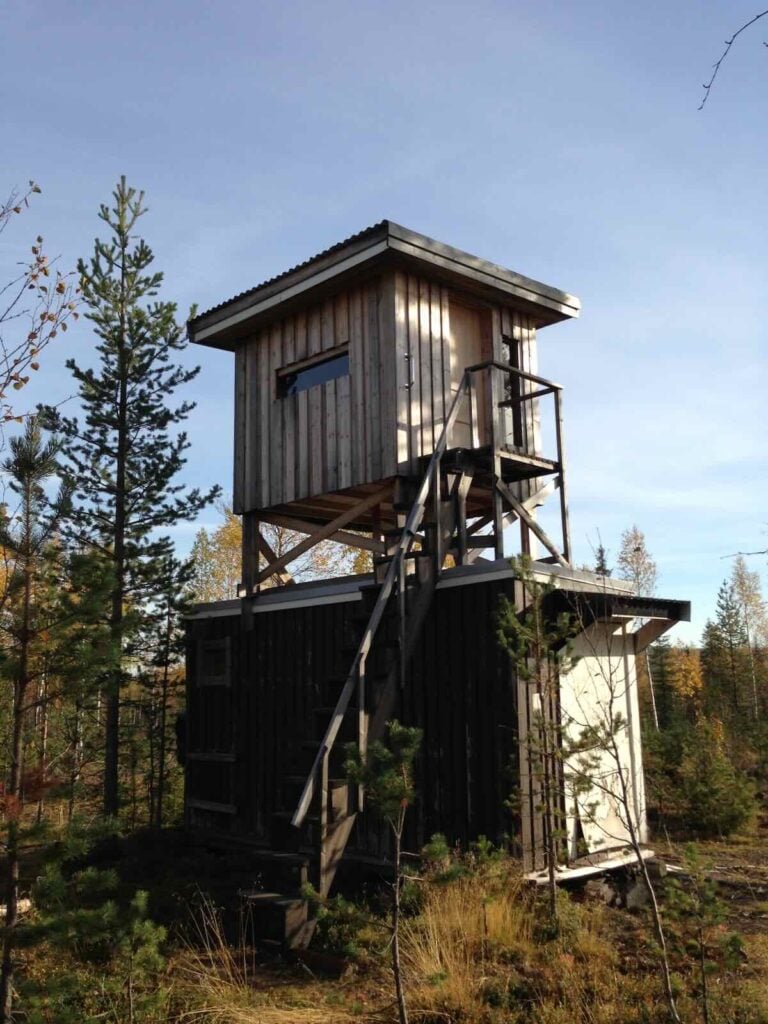
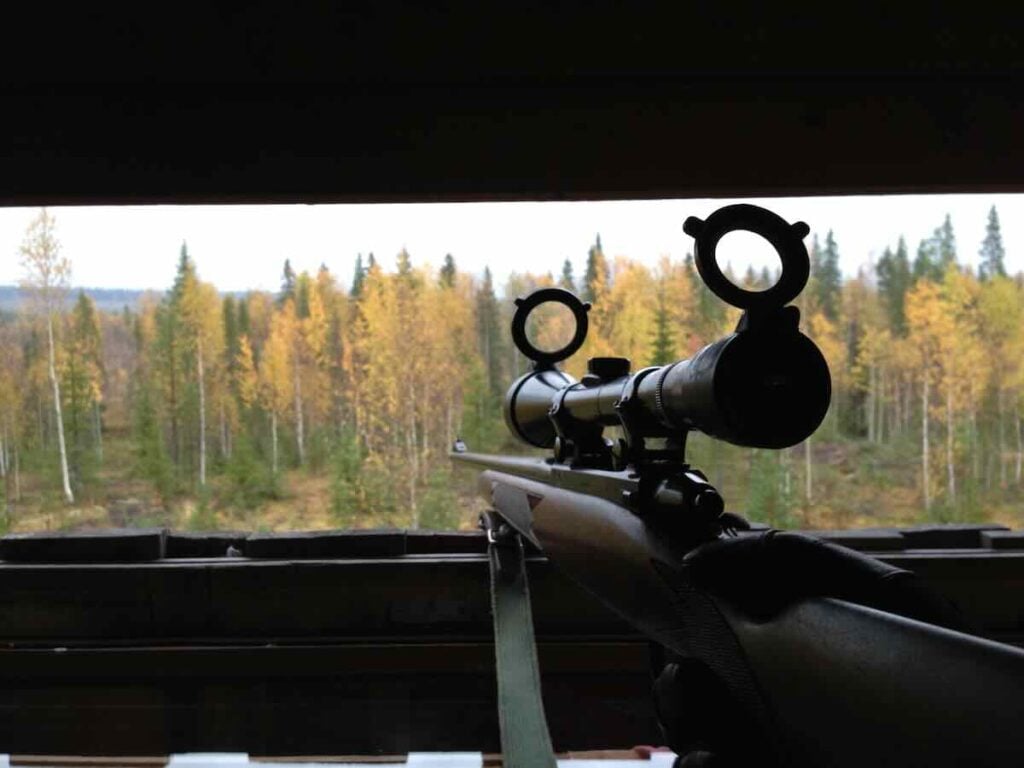
There are more than 350 000 moose in Sweden, even though it is also a very popular prey during the hunting season in the fall, when almost 100 000 are shot.
A FREE Quick Guide to Learn About the Nordics
Lear more about the Nordic countries, culture & languages and some uniquely Nordic ways of life.
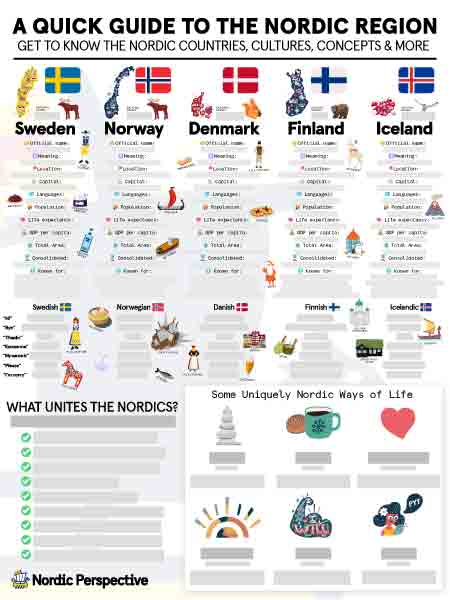 Get the FREE Quick Guide
Get the FREE Quick Guide
Although I have gone moose hunting a few times myself, I have yet to shoot one (no complaints here though, as they are so majestic!).
Sweden has the third biggest moose population in the world after Russia and Canada, and the most moose per forest and land area. Other countries with their own moose herds include the US, Canada, Norway, Estonia, Latvia, Finland, Russia, Mongolia, and China.
The moose is a popular subject of Swedish folklore, and is often depicted in art, literature and pop culture.
And no wonder, since moose can be found in both rural and urban areas, often barging in unexpectedly to people’s backyards (like below).
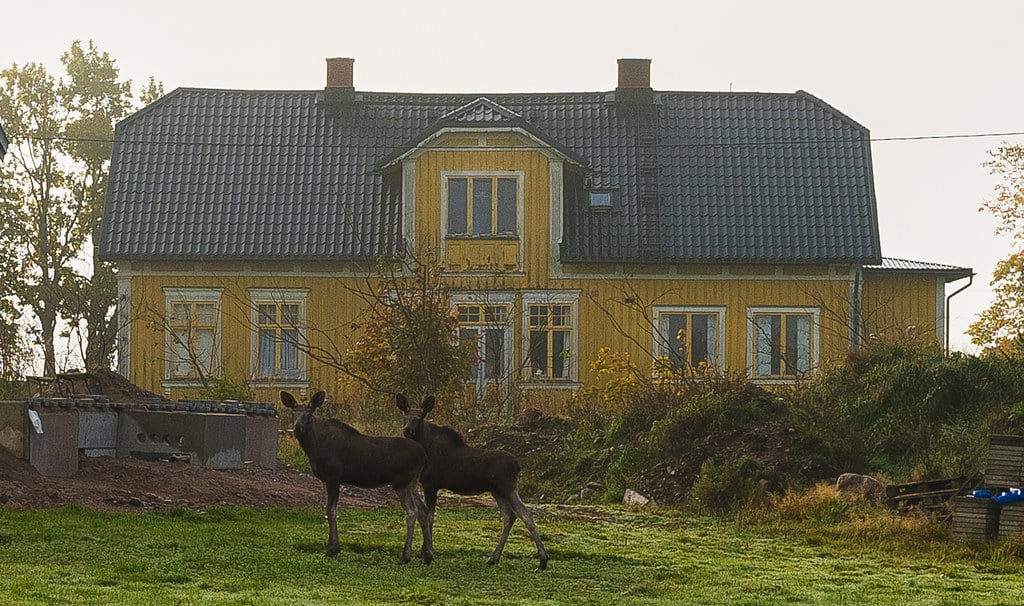
The Moose in Sweden: its habitat and diet
The moose is a large mammal that can weigh up to 500 kg and can be found in forests throughout the country, though it is much more common in the northern region of Norrland.
Its diet consists mostly of leaves, twigs, and bark, but it will also eat different types of grass, berries, and nuts—all of it collected across vast areas. In the winter, when food is scarce, the moose may also eat small mammals or carrion.
Moose do also tend to wander out on roads all over Sweden, and due to its height and weight it can be devastating for both animal and driver in a collision.
Signs like the one below are usually displayed in areas where moose sightings are common, so that drivers can take extra care in order to avoid a sudden and deadly collision.
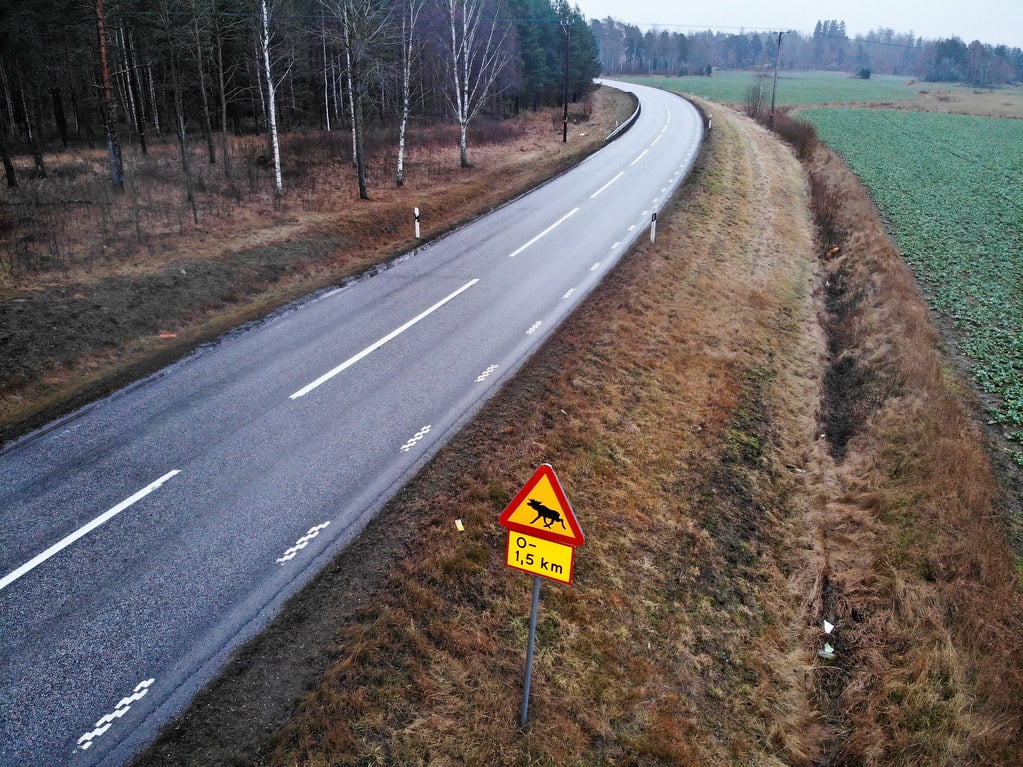
The signs are iconic and fairly unique in Europe, which might explain why especially German tourists have often tried to steal them historically speaking, or at least buy replicas in tourist shops (which is by far the more common way to acquire them I should add).
The Moose in popular culture: from advertising to stamps
In Sweden, the moose is not just an animal – it’s a national icon. The moose is featured quite heavily in advertising, films and media in general.
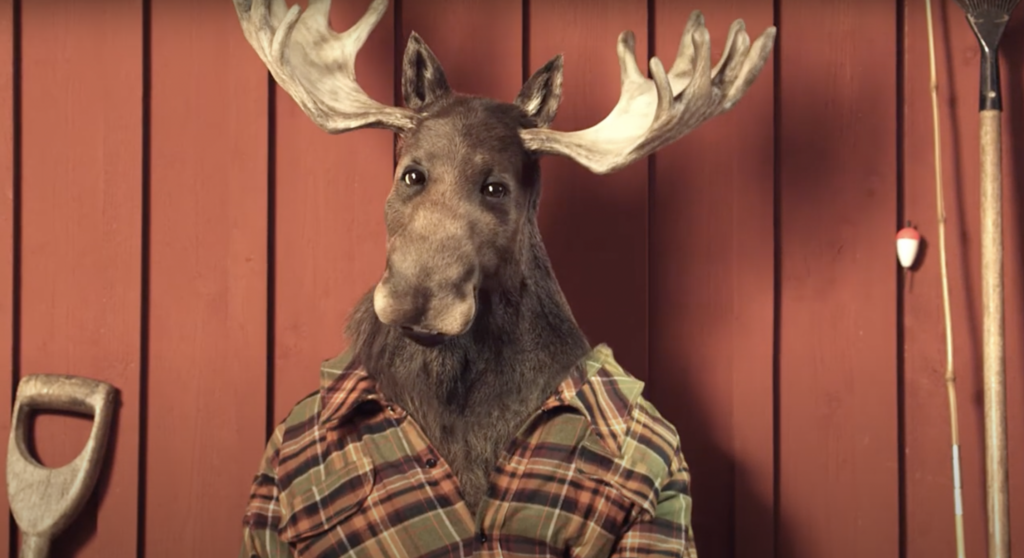
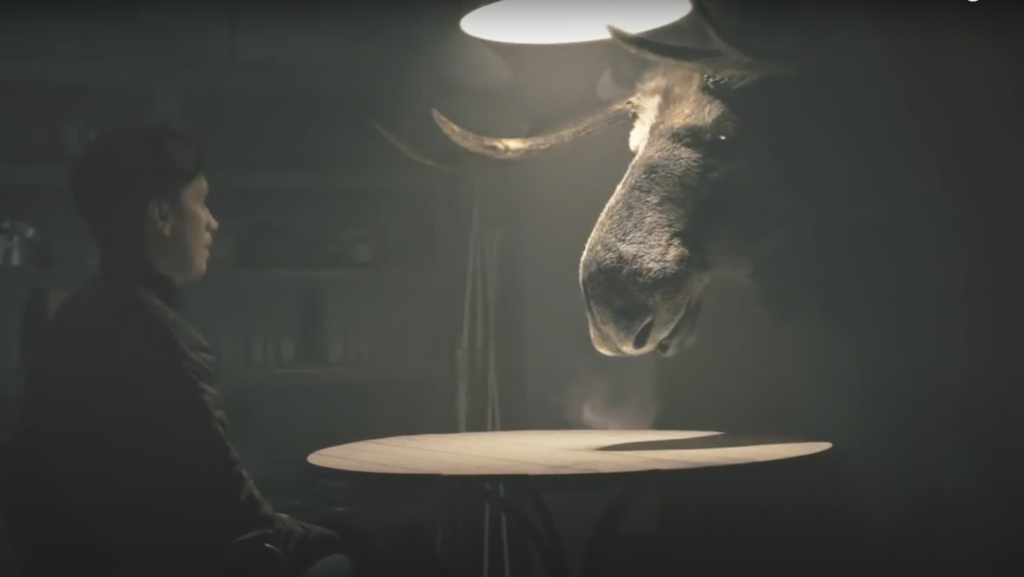
In one classic commercial for the Swedish cheese brand Billinge, we get to follow a moose who feels discriminated against after moving to the big city (and it’s even in English):
Additionally, the moose is a very popular model for stamps in Sweden, with two examples below:
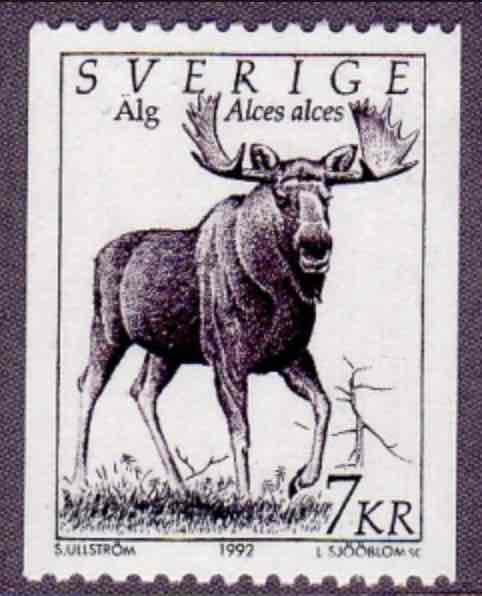
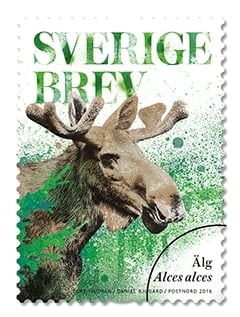
Why the Moose is a fitting National Symbol for Sweden
The moose is a fitting national animal for Sweden for a number of reasons:
- It is a symbol of the country’s mythical and ancient roots (as in the Old Norse) and is closely linked to Swedish folklore and history.
- It is known for its calm and gentle nature, which perfectly represents the modern Swedes’ love of peace and tranquility.
- Finally, the moose is an excellent example of Sweden’s commitment to environmental conservation, as this majestic creature is only found in areas where there is a healthy ecosystem (it no longer exists in Germany due to deforestation, for example).
I also wanted to mention that we do have an official national bird in Sweden, so let’s take a look at that real quick before diving deeper into the world of the Swedish moose.
What is the National Bird of Sweden?
In 2015, Birdlife Sweden organised a vote in which almost 55,000 people participated, with almost 13,000 voting for the winning blackbird to become Sweden’s official national bird.
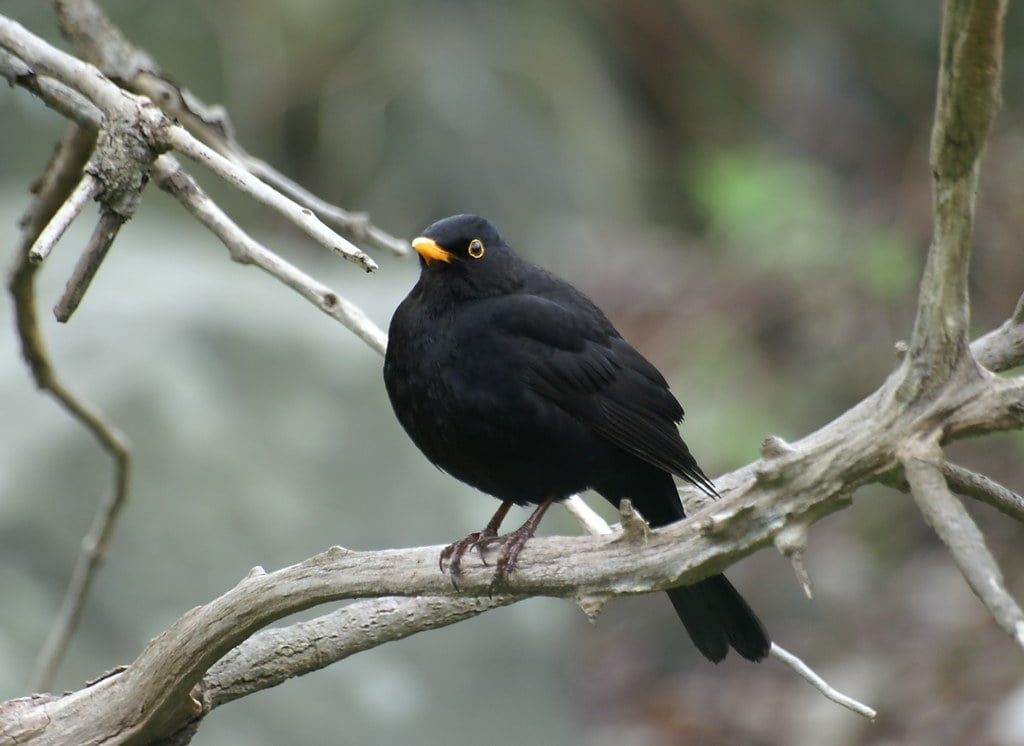
In the final vote, the skate came second, the blue tit third and the raven fourth. They were followed by the sea eagle, the bullfinch, the corncrake, the robin, the black grouse and the chaffinch.
Interestingly, none of Sweden’s most common birds (the chaffinch is the second most common, the robin the third most common) was among the most voted bird species.
All the Provincial Animals (Landskapsdjur) of Sweden
So you’ve gotten acquainted with the moose, now let’s get to know all the official animals of Sweden’s 25 provinces next, in alphabetical order to avoid any accusations of favoritism (as I’m a proud Skåning myself 😉).
Blekinge: Stag Beatle (Ekoxe)
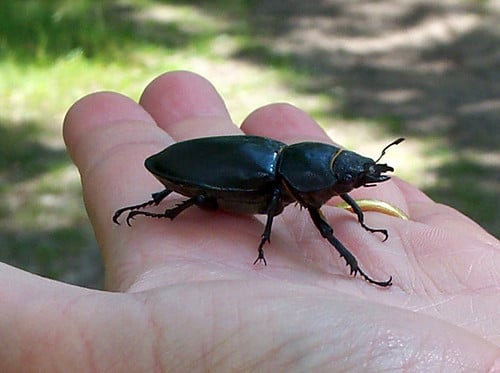
This large, black beetle can be found in the Blekinge region of Sweden. And while they might not be the most cuddly creature, they are an important part of the ecosystem.
The stag beetle is a threatened species, so it’s important to take steps to protect them. One way you can do this is by creating a habitat for them in your own backyard.
So if you’re looking for a unique animal to add to your list of Swedish wildlife sightings, keep your eyes peeled for the stag beetle.
Bohuslän: Harbor Seal (Knubbsäl)
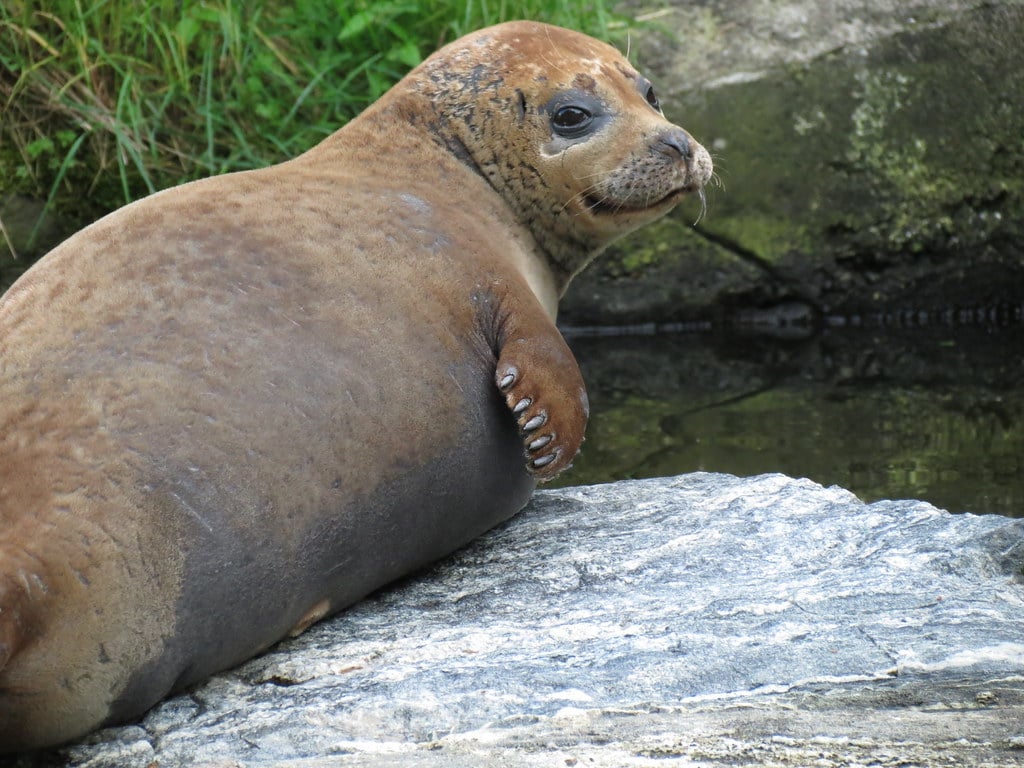
Bohuslän, on the west coast of Sweden, is home to large colonies of harbor seals, and one of the few places in the world where you can see these animals in their natural habitat.
The harbor seal is a protected species in Sweden. They are typically found in coastal areas and on islands. Bohusl n is one of the best places to see them because there is no hunting or fishing allowed in the area.
If you’re lucky, you may even spot a baby harbor seal during your visit to Bohuslän. These adorable creatures are born weighing only about 15 pounds. They grow quickly, though, and can reach up to 400 pounds by the time they’re fully grown!
Dalarna: Eagle-Owl (Berguv)
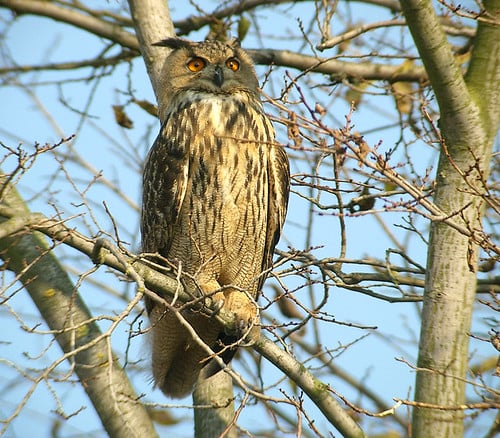
These nocturnal birds are most active at dawn and dusk, and can often be seen perched on tree branches or hunting for prey. With their sharp eyesight and hearing, they’re able to spot a mouse from over 100 meters away!
Eagle-owls mate for life and usually have just one mate at a time. If their mate dies, they will eventually find another partner. Females lay two to four eggs per clutch, and incubate them for about a month. The female does most of the hunting while the male protects the nest.
Dalsland: Raven (Korp)
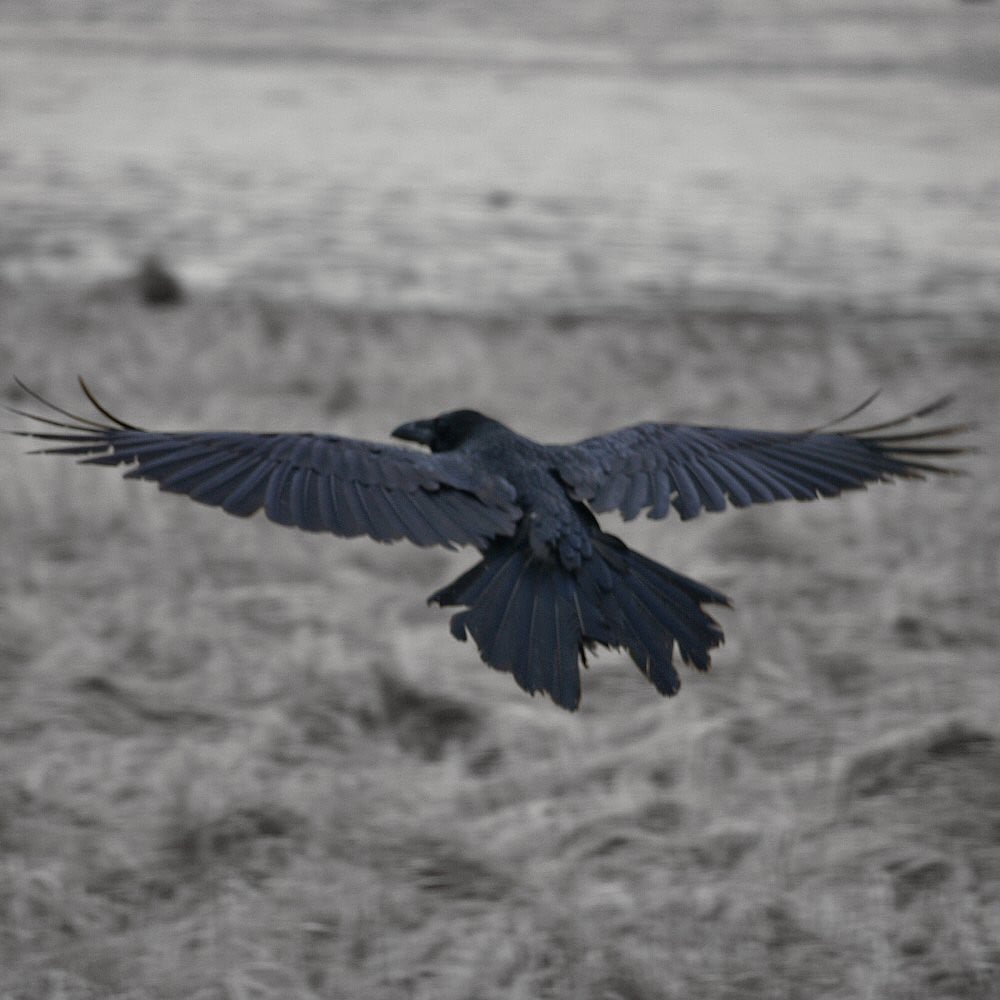
The raven is a large bird of the crow family, and it’s known for its glossy black feathers and its raucous call. Ravens are intelligent birds, and they’re often seen as symbols of wisdom in many cultures.
The raven was a symbol heavily associated with the Norsemen of the Viking Age, and commonly featured on banners, longship sails, coins, and runestones.
Gotland: Hedgehog (Igelkott)
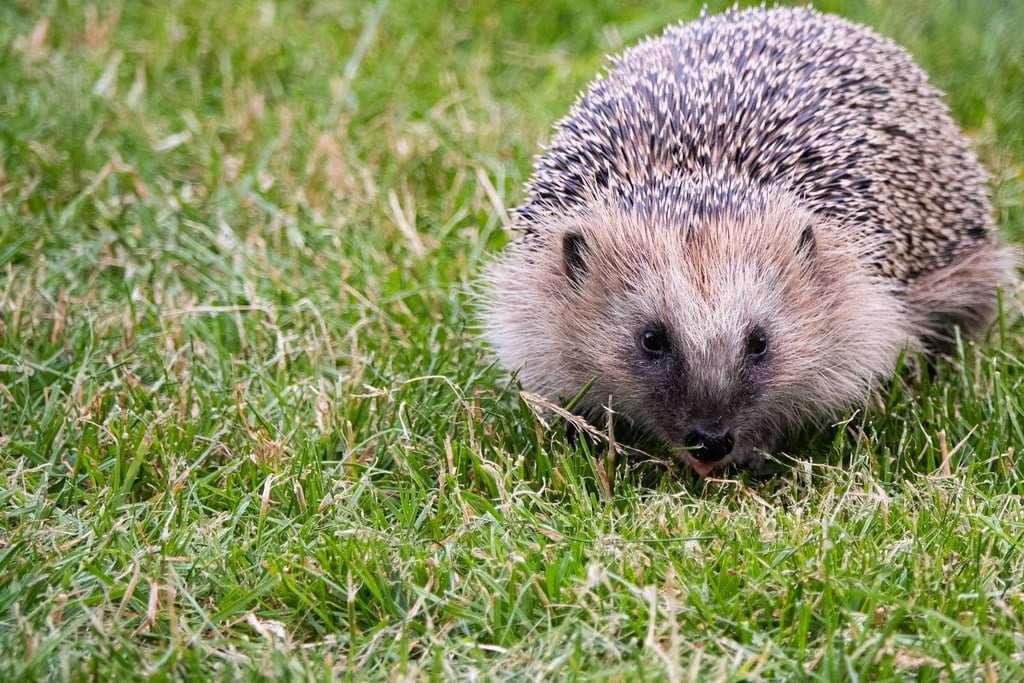
Hedgehogs are a welcome guest in most gardens, mostly because they tend to eat many hostile pests, but also due to their friendly appearance.
Hedgehogs are nocturnal animals and spend most of their time searching for food. They eat a variety of insects, slugs, and other small creatures, most of which are on a mission to ruin gardens.
Though they may be cute, hedgehogs can also be quite dangerous. Their sharp quills can cause serious injury if handled improperly, especially for dogs who tend to get too curious for their own good from time to time.
Gästrikland: Western Capercaille (Tjäder)
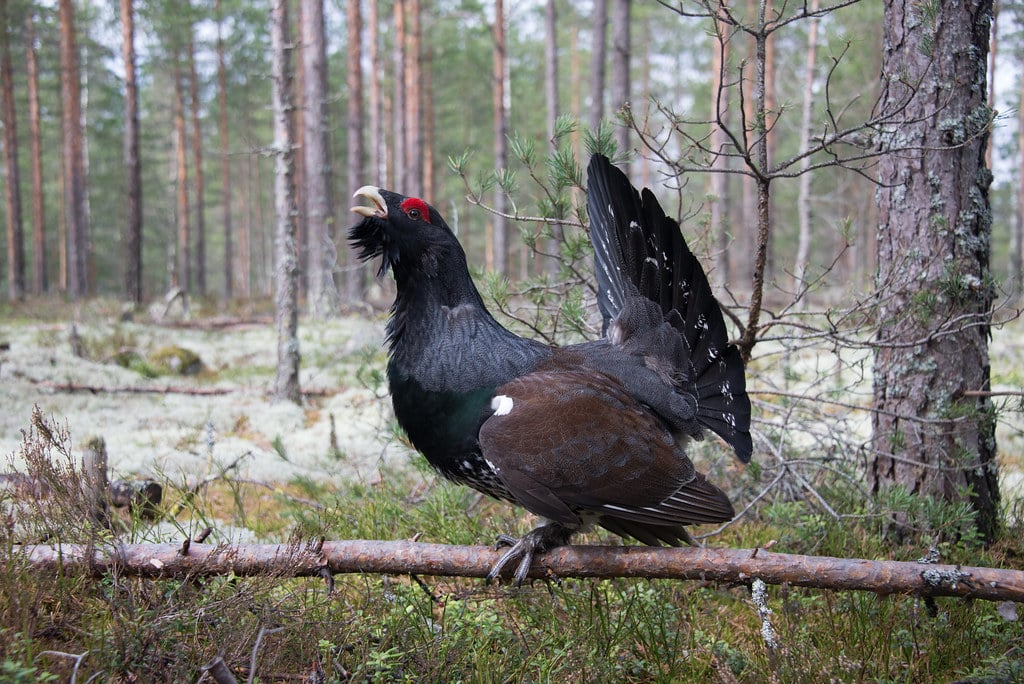
The Western Capercaille is a member of the grouse family and is the largest member of that family. They are about the size of a chicken and have black and white feathers. The males have a red wattle on their heads, which they use to attract mates.
Western Capercailles are found in forests and woodlands throughout Europe and Asia. In Sweden, they are most commonly found in the G strikland region. These birds are shy and secretive, so they are not often seen by people.
Halland: Salmon (Lax)

Salmon are an important part of the ecosystem in Halland, the only region where they populate the rivers and streams en masse. They play a vital role in the local economy, as they are harvested for their meat, oil, and eggs.
The salmon is also popular among recreational fishermen as it can offer quite a challenge to catch.
Hälsingland: Lynx (Lodjur)
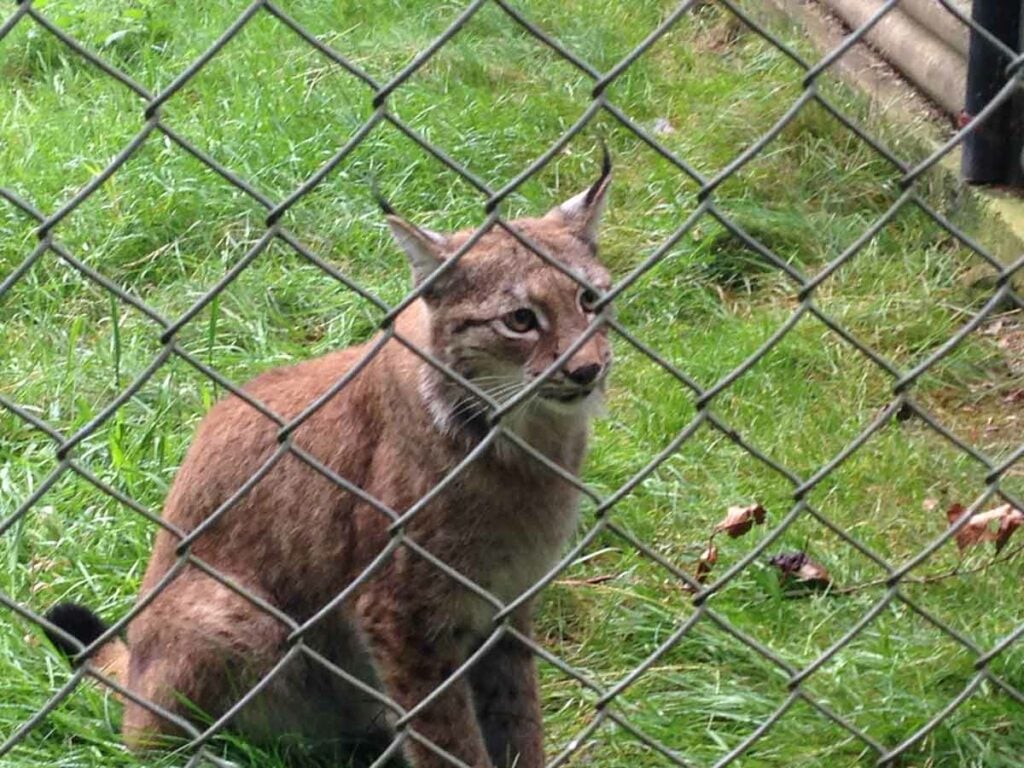
The lynx is a wild cat, and a timid animal that is seldom seen by people. When it is seen, it is usually alone or in pairs. The lynx is active at night and sleeps during the day. It hunts small animals such as rabbits, rodents and birds.
It has long legs and large paws that enables the wild cat to travel through deep snow. Its fur is thick and pale brown with black spots, it has characteristic black tufts of hair on its ears, and its long tail has a black tip.
The Lynx is about twice the size of a house cat, and an important part of the ecosystem in Hälsingland.
Härjedalen: Brown Bear (Brunbjörn)
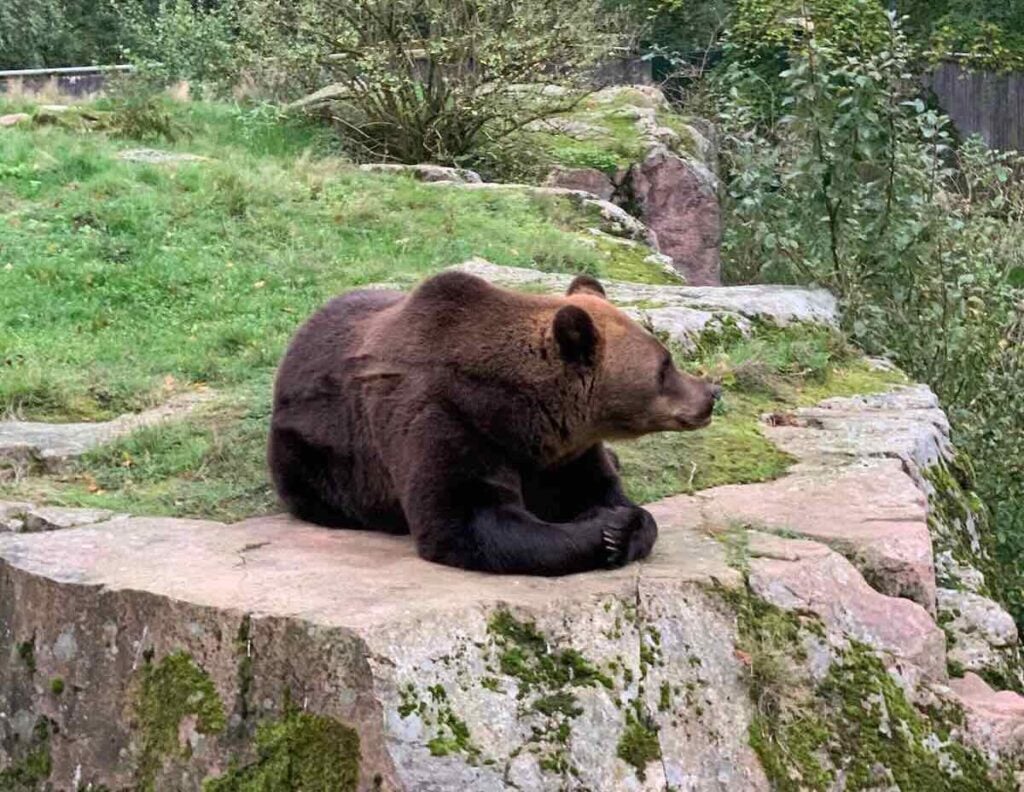
The brown bear is a large, powerful, and fearsome mammal that can weigh up to 1,500 pounds and stand up to eight feet tall on its hind legs. I’ve only seen them up close in an animal park, but my brother in laws dad encounters them quite frequently when he’s out hunting moose in Norrland.
It is the largest land-based predator in Europe, and has a long, shaggy coat that varies from light brown to dark brown.
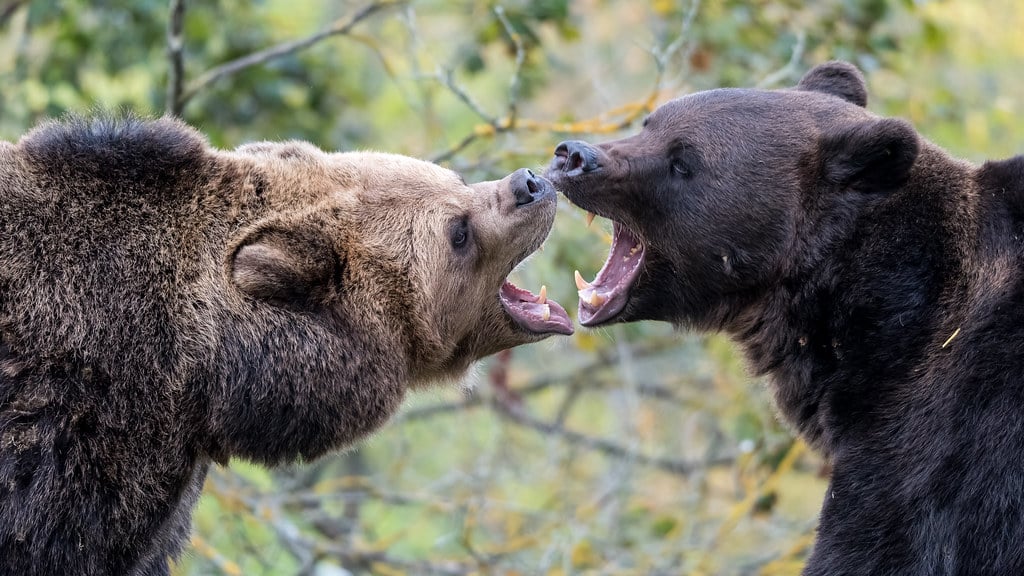
The brown bear has a broad head and large, powerful jaws, and its claws are short and thick for digging through snow. Brown bears are excellent hunters, but they also love eating the plentiful berries of northern Sweden’s marshlands. They also hibernate in the winter, meaning they’re mainly active in the warmer half of the year.
Jämtland: Moose (Älg)

Well you know the moose by now, but on top of being the unofficial symbol of Sweden it’s also the official provincial animal of Jämtland, and displayed proudly on the region’s coat of arms.
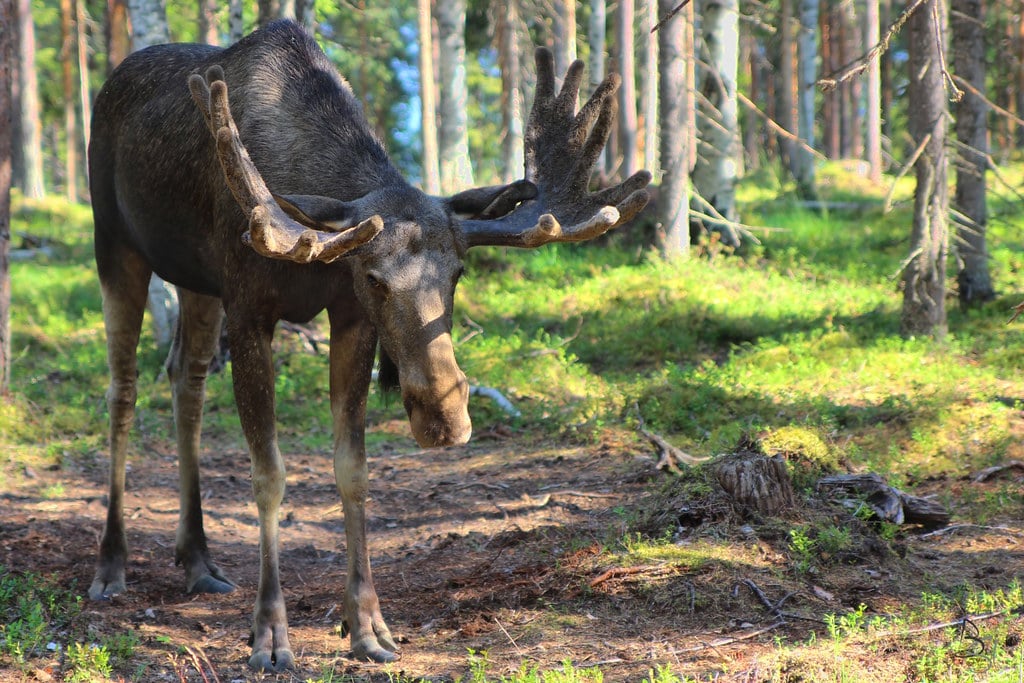
It mainly inhabits the forested areas of the Jämtland region, although I hear about spontaneous visits in people’s backyard quite frequently!
And while the moose may be common in Jämtland, its populations are still carefully monitored by the Swedish government.
Lapland: Arctic Fox (Fjällräv)
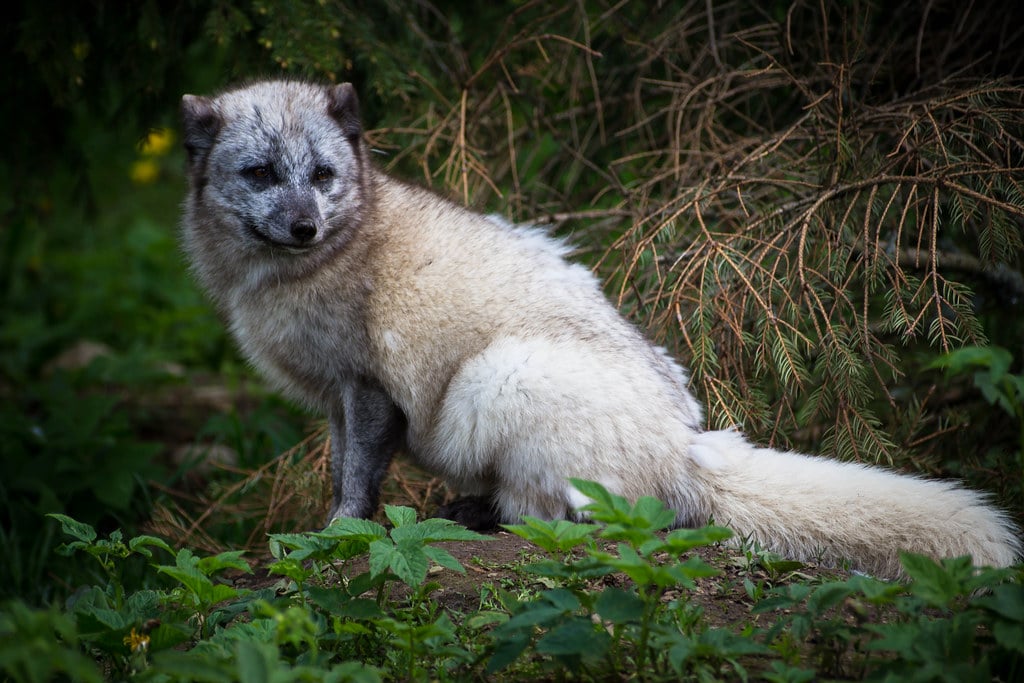
The arctic fox is a small fox that is well-adapted to living in cold environments. It has a white or blue-gray coat of fur that helps it blend in with its surroundings (mainly snow) and keep it warm.
The quick and nimble animal is a carnivore and its diet consists mainly of small mammals, birds, and insects. It is an important part of the Arctic ecosystem and helps to keep the populations of its prey in check.
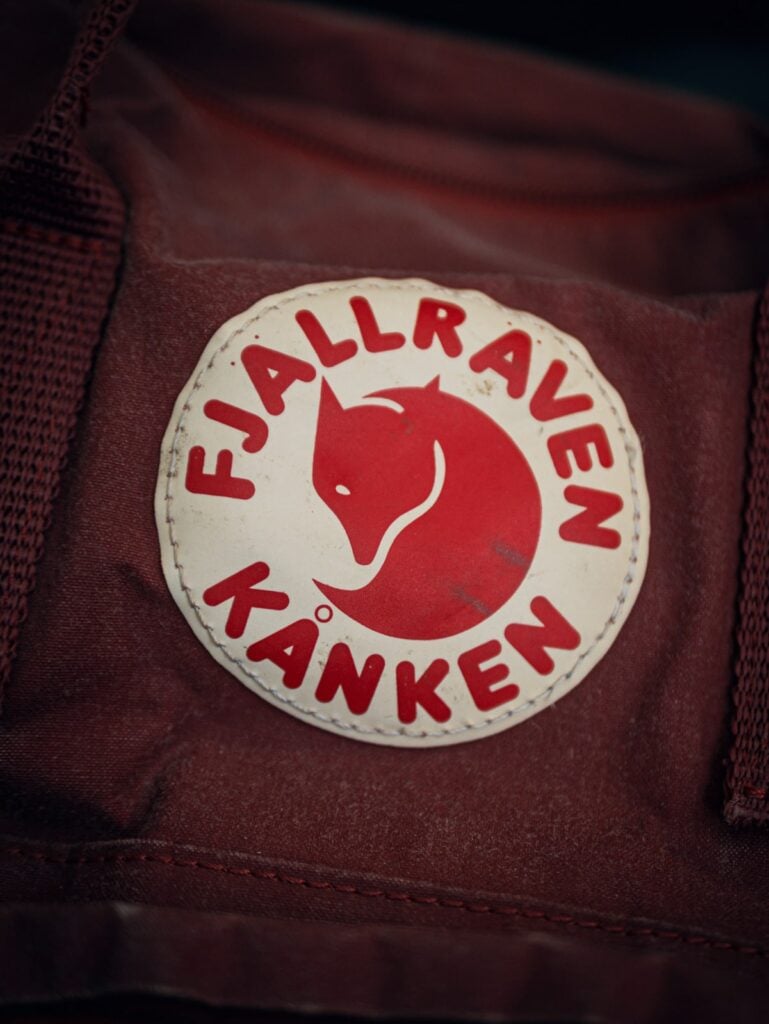
And of course, it has given name to the popular Swedish outdoor brand Fjällräven (literally “the Arctic Fox”), and features in the brand’s iconic logo that is seen on backpacks all over the world.
Medelpad: Forest Hare (Skogshare)
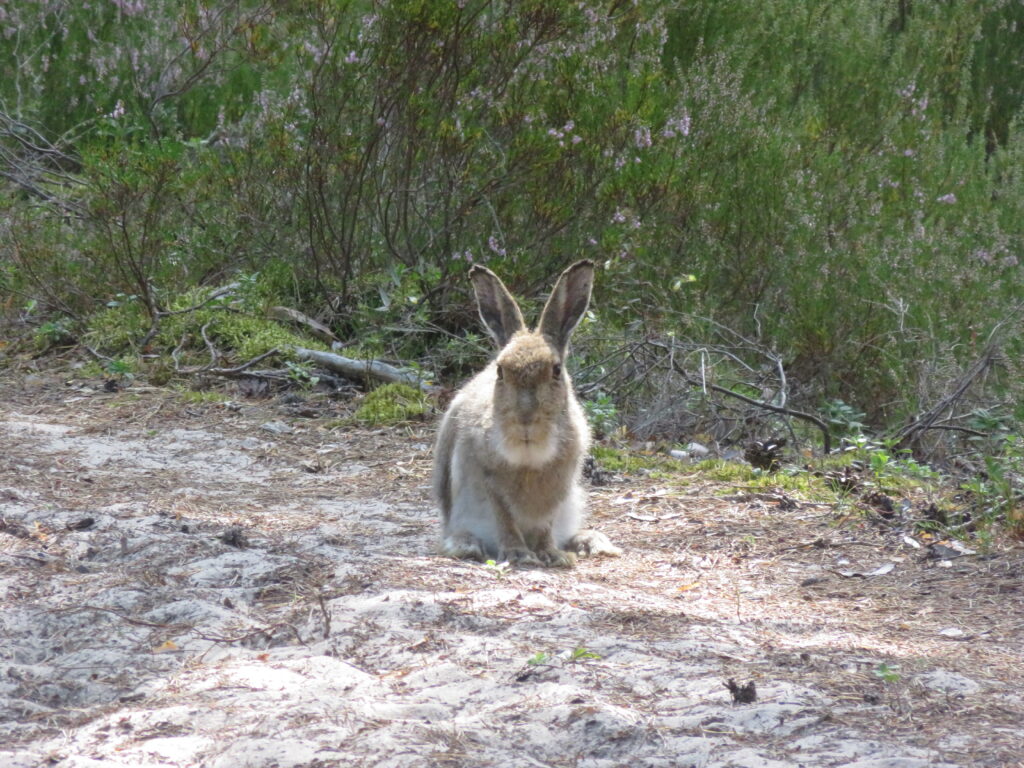
The Forest Hare is a shy creature, but is also known to be very curious. It is active both day and night, and feeds on a variety of plants and vegetables.
Just like the arctic fox, the hare’s coat turns white in winter, helping it to camouflage in the snow.
Though a popular prey for hunters, the animal is mainly perceived as a utility and not a pest. As such, the hunting of hares is regulated in order to maintain their numbers.
Norrbotten: Siberian Jay (Lavskrika)
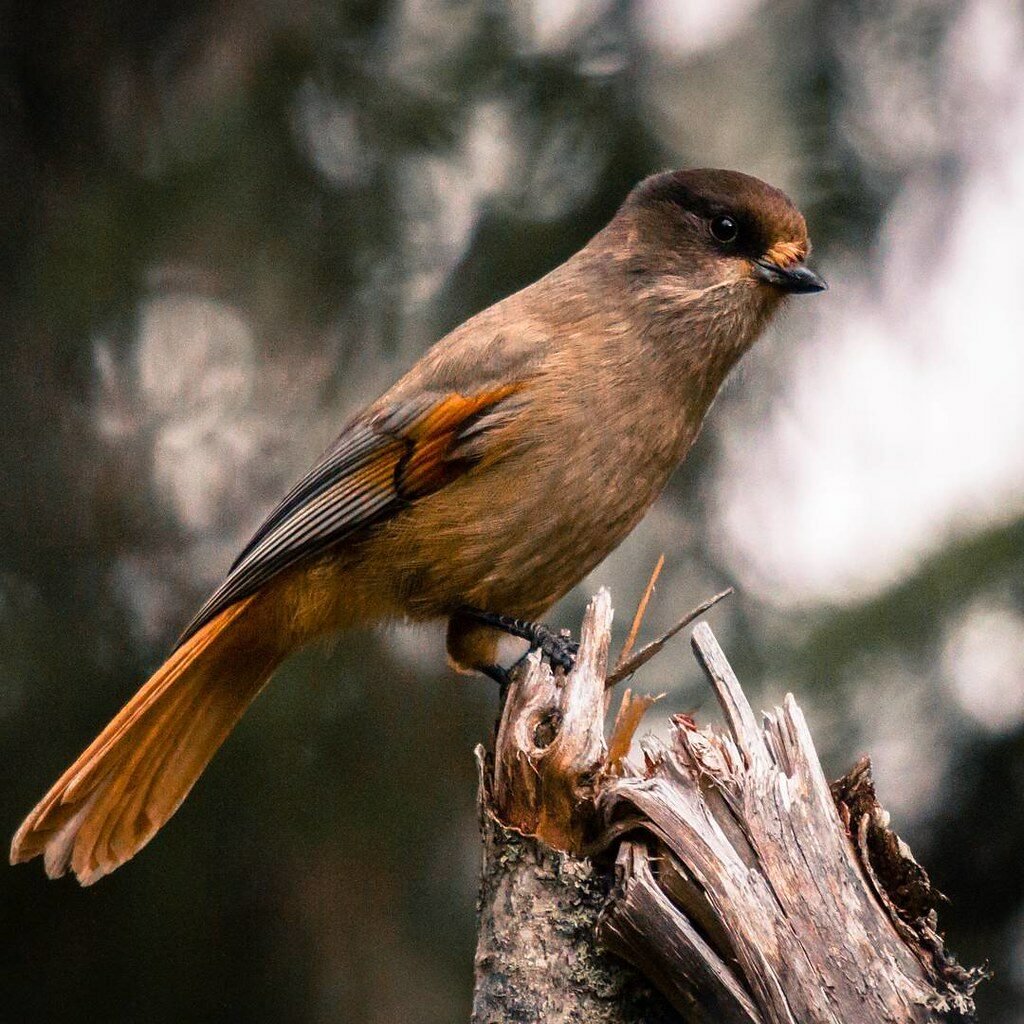
Norrbotten, in the very north of Sweden, is home to the Siberian jay. This bird is a member of the crow family and like its relatives is known for its intelligence. They are known to be fearless and often seek out people in the woods to forage, and have even been observed using tools, like twigs and rocks.
The Siberian jay has also played an important role in Swedish folklore, and stays in its territory in the winter (as opposed to migratory birds who fly south).
Närke: Hazel Dormouse (Hasselmus)
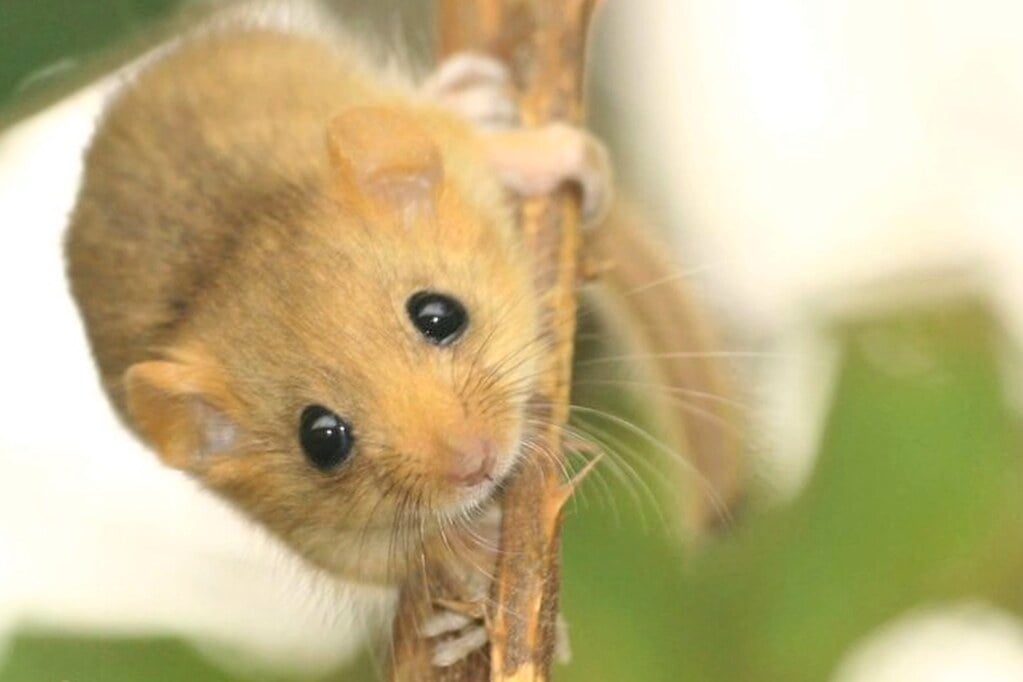
The Hazel Dormouse (Muscardinus avellanarius) is a small, brown-and-grey rodent with a long tail, large ears, and furry feet.
The hazel dormouse is found in woodlands and hedgerows across Europe and Asia, and is particularly common in Sweden. It feeds on insects, berries, and nuts, and hibernates for up to six months of the year.
The small mouse is protected by Swedish law, though its populations are thought to be stable.
Skåne: Red Deer (Kronhjort)
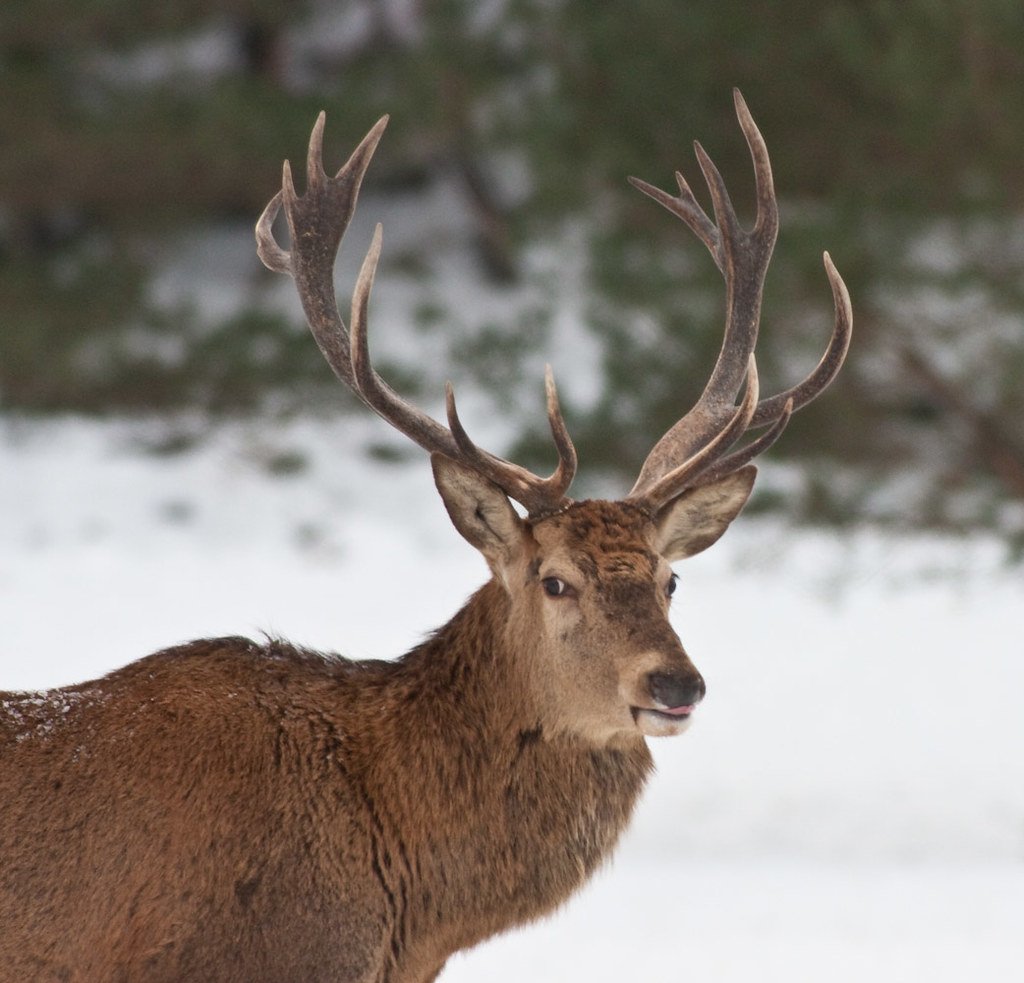
The red deer is found in the forests of central and southern Sweden, and has been a symbol of the Swedish countryside for centuries. Driving and walking around the many farm fields and forests of Skåne (where I live) quite often presents you with an opportunity to see these majestic creatures.
Today, there are an estimated 8200 red deer in Sweden, and the hunting of them is heavily regulated (as an example you can only hunt it for an hour after sunrise and before sunset respectively during hunting season).
The population has been steadily increasing since the 1970s, when these hunting regulations were put in place to protect the species.
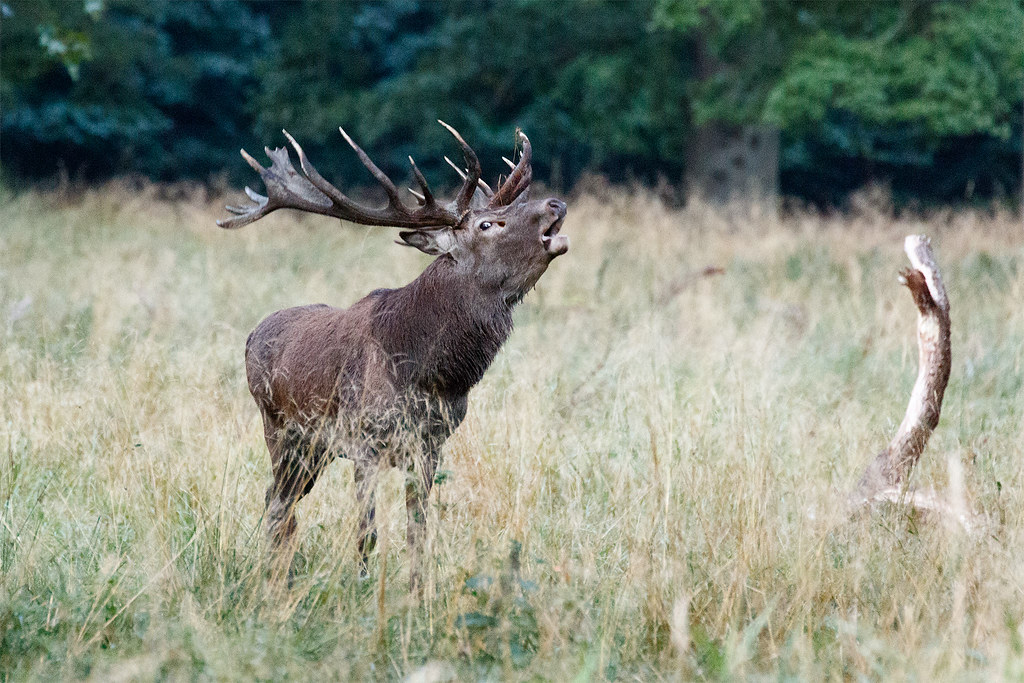
The red deer is a popular game animal, and its meat is prized for its flavor (that I can personally attest to!) and nutritional value. In addition to being a valuable source of food, the red deer’s hide can be used to make clothing and other goods.
Småland: Otter (Utter)
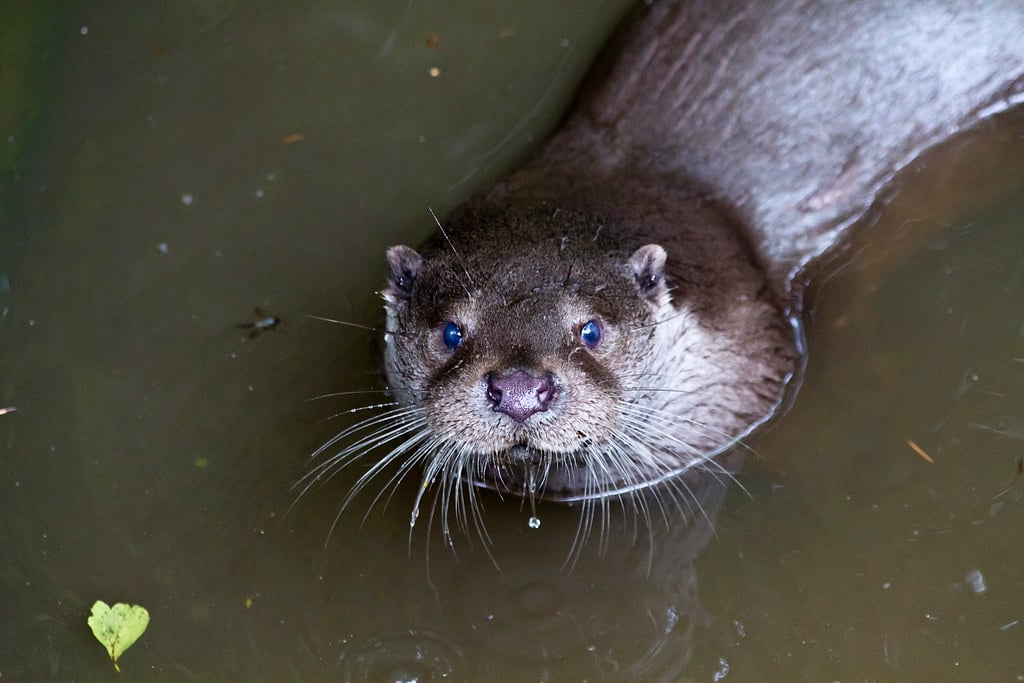
The otter is a protected species and found in all parts of Sweden, except for the very north. It lives in fresh water, such as lakes and rivers, and mainly eats fish, crayfish, and frogs.
The otter is a shy animal that is seldom seen by people; active at night and sleeping during the day. The female otter gives birth to two to five young at a time, who stay with their mother for about a year before they go off on their own.
Södermanland: The Sea Hawk (Fiskgjuse)
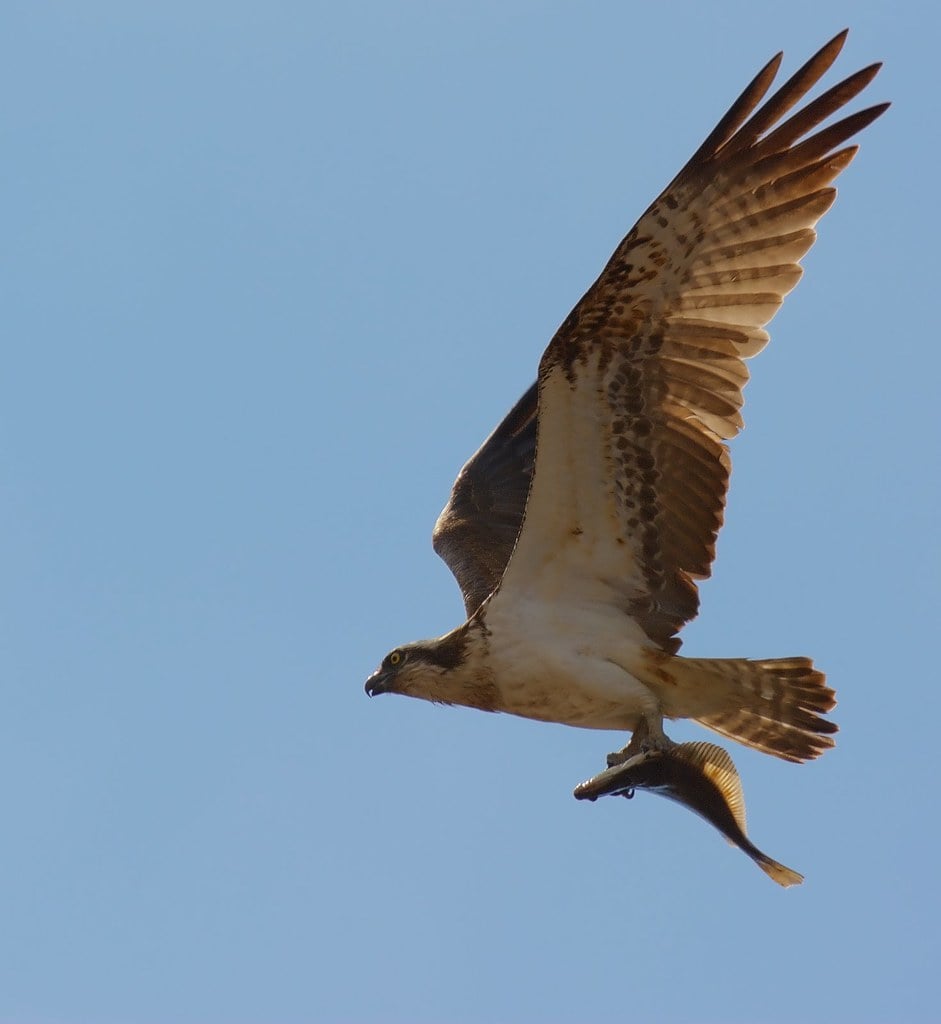
The sea hawk, or osprey, is a raptor (i.e. a predatory bird) with a wingspan of up to 180 centimeters (almost 6 feet). It has dark brown feathers from above and almost white from below, with a dark stripe running through each eye.
The sea hawk eats fish exclusively, which it catches by swooping down from the air and grabbing them with its talons. It can be found near bodies of water all over Sweden.
Uppland: The White-tailed Eagle (Havsörn)
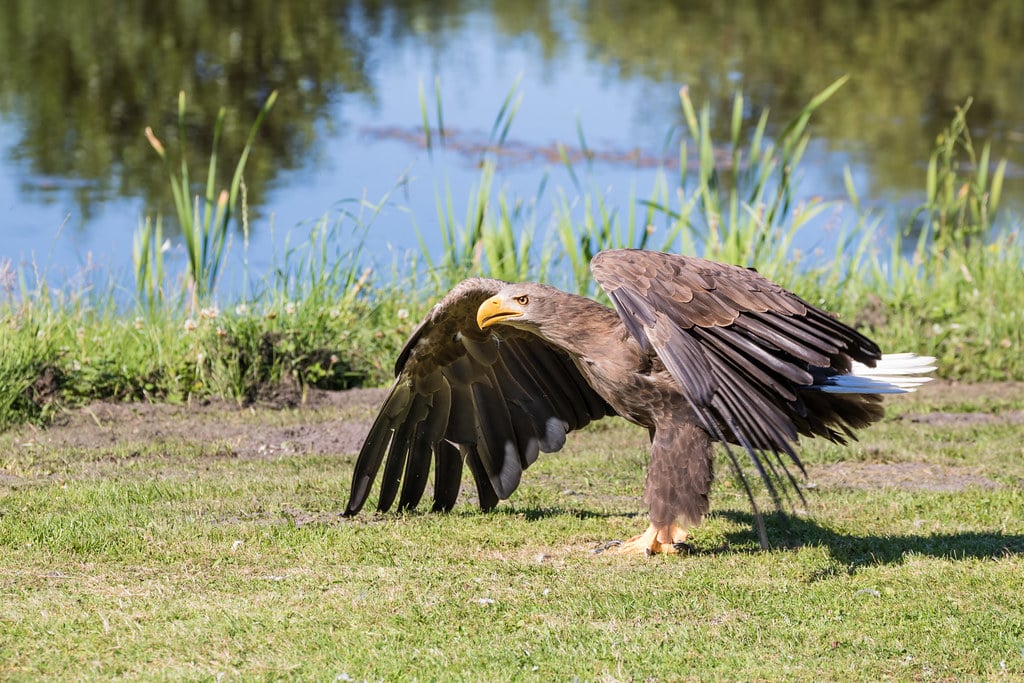
The white-tailed eagle is the provincial animal of Uppland and the largest bird of prey in Europe. It has a wingspan of up to 2.5 meters (more than 8 ft 2 in) and can weigh up to 7 kilograms (around 15.5 lbs).
The big eagle primarily feeds on fish, small mammals, and carrion (animal corpses), and nests in trees or on cliffs near water bodies. The white-tailed eagle is protected by law in Sweden and it is illegal to kill one or possess any part of the bird.
Värmland: Wolf (Varg)
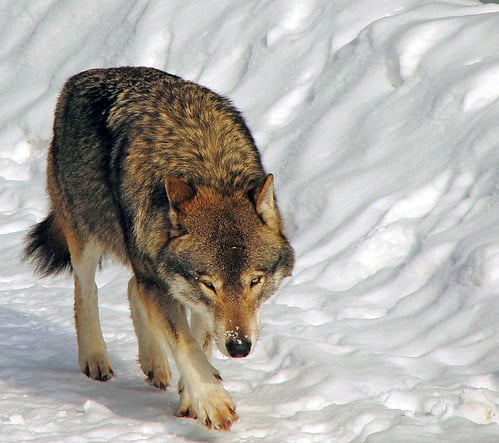
The Swedish wolf is gray with a white underbelly and a black tail, with adults weighing up to 160 pounds. It is the most specialized social hunter of hame among the canine family, with big flocks of 15-20 wolf coordinating to take down significantly bigger animals such as moose.
The wolf population in Sweden has increased in recent years, although it did experience a long period of decline due to hunting and habitat loss. There are currently only about 460 wolves left in the wild in Sweden as of 2022, up from about 385 the previous year.
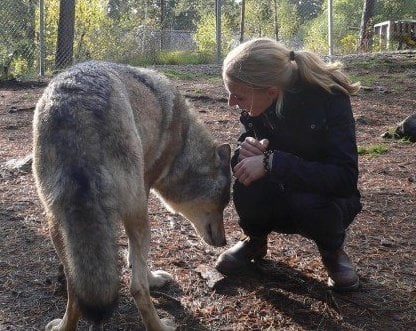
The Swedish government has put regulations in place to help protect the remaining wolves and their habitat, and although the wolf is not considered endangered on a global level, it is in Sweden specifically.
Västerbotten: Eurasian Curlew (Storspov)
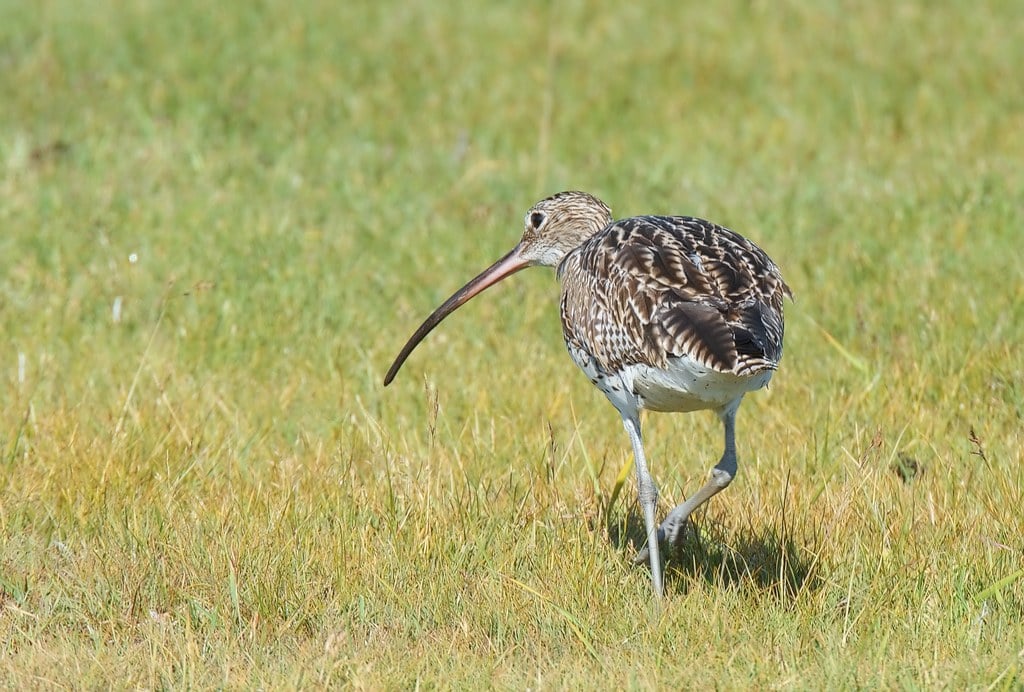
The Eurasian curlews are known for their long legs and bill, as well as their distinctive cries. Curlews inhabit wetland areas and can be seen wading in shallow water in search of food.
In the winter, Eurasian Curlews migrate to southern Europe and Africa.
Västergötland: Crane (Trana)
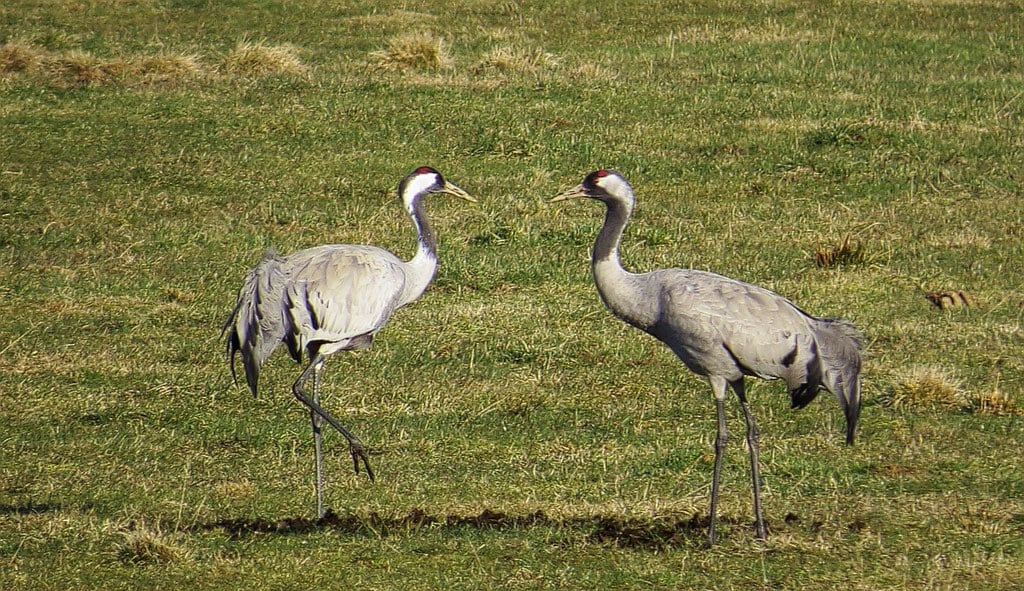
The crane is a tall, white bird with a long neck and legs, and carries significant cultural value in Swedish history and folklore. It also has a spectacular mating dance that it performs during its mating season in spring.
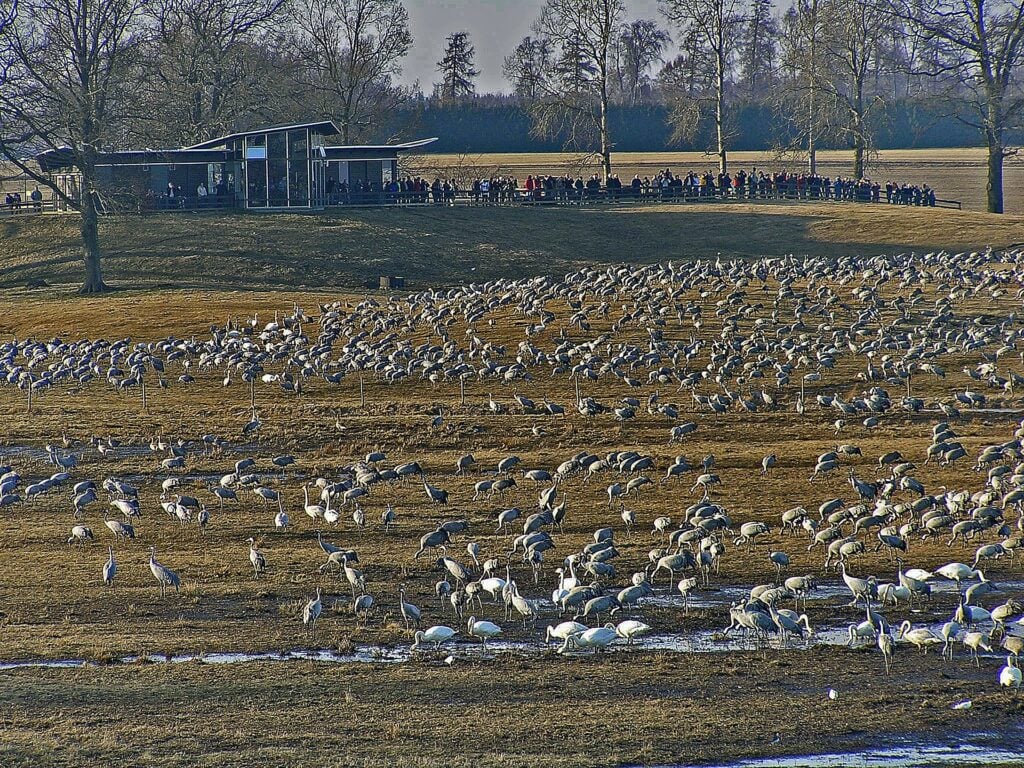
Cranes can be found in many places in Sweden, but perhaps especially so around Hornbogasjön in Västergötland, which attracts thousands of crane every year for mating season.
Västmanland: Roe Deer (Rådjur)

The roe deer is a medium-sized deer with a reddish-brown coat and white spots on its hindquarters. It is found all over Sweden, but is especially plentiful in the southern parts of the country (they’re literally everywhere around Malmö, where I live).
Male roe deer have antlers, which are shed each year and grow back during the springtime. Roe deer are shy animals and are most active at night, making them a common danger on the night roads of Sweden.
Ångermanland: Beaver (Bäver)
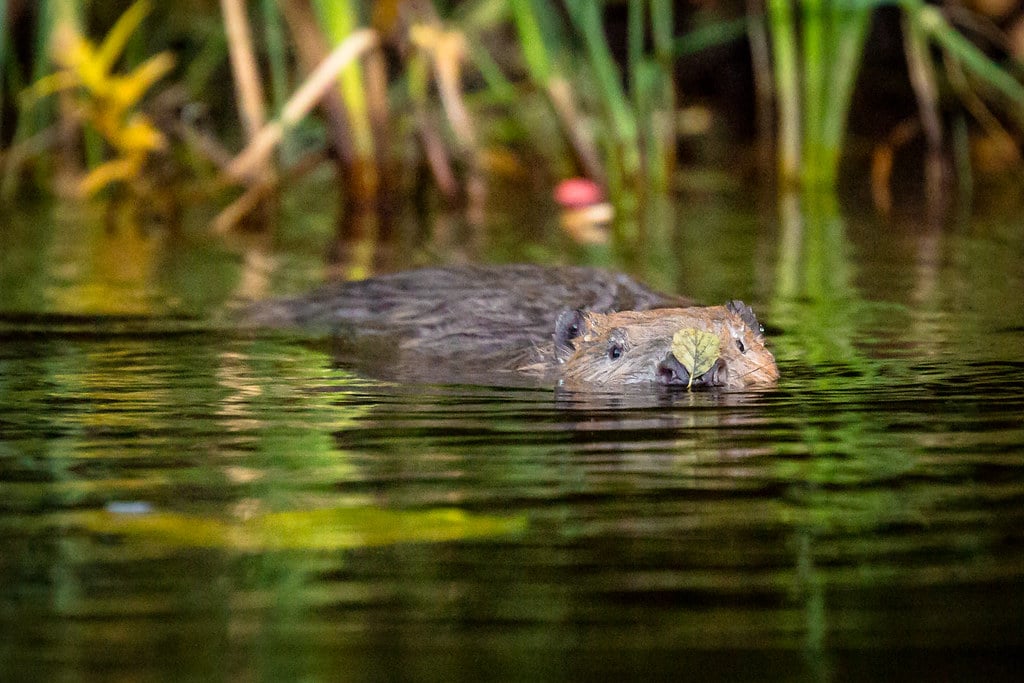
The beaver is a large, furry creature with a long, thick tail. It is an excellent swimmer and often builds dams in rivers and streams.
They are nocturnal animals, and their diet consists mainly of plants and tree bark.
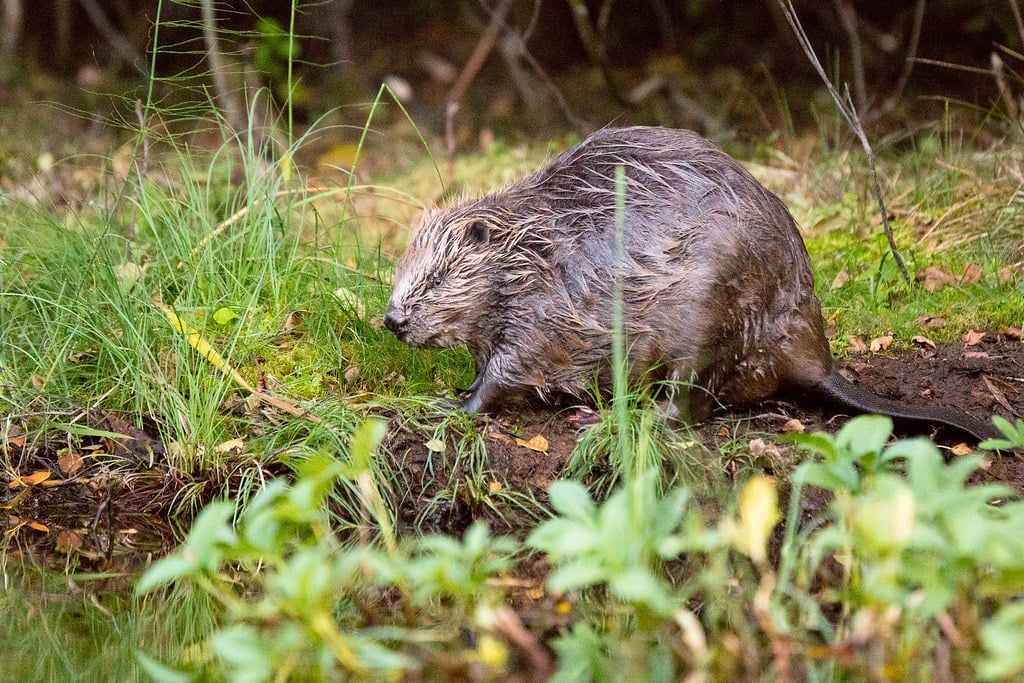
Beavers are very important to the ecosystem, as they help to create wetlands which are essential habitats for many other animals.
There has been an increase in the beaver population over the past 100 years, after a period in which there were no beavers at all in Sweden around the turn of the century.
Öland: Nightingale (Näktergal)
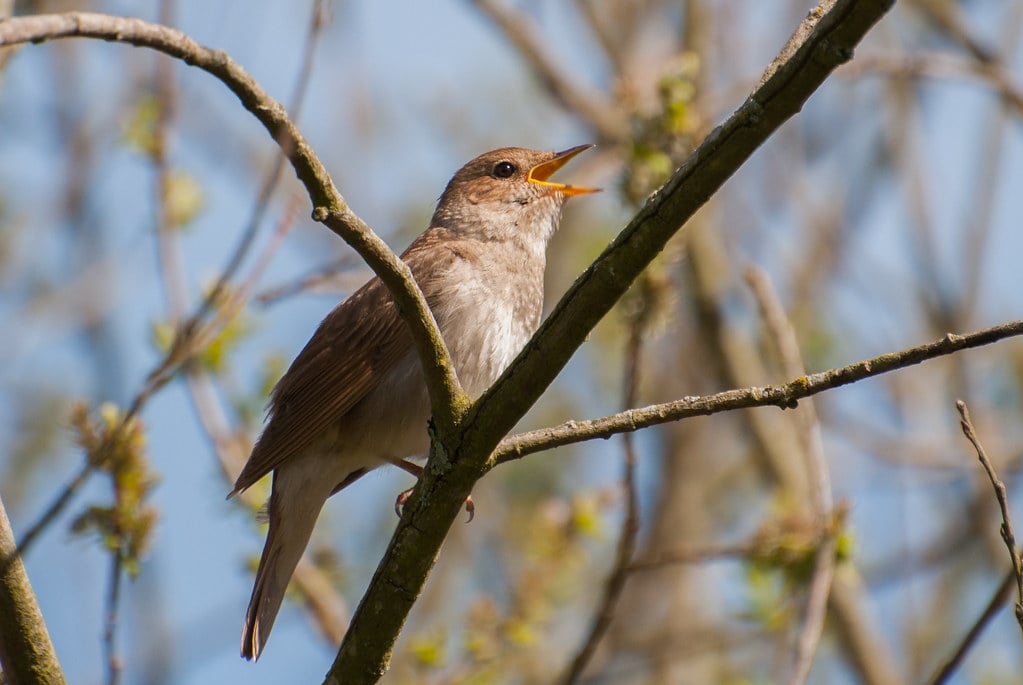
The nightingale is a small, brownish-black bird with a white belly. It is found in woods and gardens, and is known for its beautiful and famous song.
The nightingale has been revered in Swedish culture for centuries, and is often mentioned in folklore and literature.
Östergötland: Mute Swan (Knölsvan)

The mute swan is a large, majestic, and—you guess it—fairly quiet bird that can be found in most parts of Sweden. The bird is known for its beauty and gracefulness, and has been a popular subject of art and literature for centuries.
With a wingspan of around 2 meters (6 ft 7 in) and weight of up to 14 kilograms (31 lbs), the swan is among the biggest flying birds on the planet.

The mute swan is an important part of Swedish culture and history. The bird symbolizes peace and tranquility, and is often seen as a symbol of love and devotion.
By the way, if you'd like to connect to your inner Scandinavian with some stylish prints and clothing, I've created a collection of high-quality and authentic Nordic posters and apparel.
Sources:
https://sverigesradio.se/artikel/6244501
https://birdlife.se/koltrasten-sveriges-nationalfagel/
https://www.slu.se/kampanjsajter/alg/alg-faq/
https://www.skogforsk.se/kunskap/kunskapsbanken/2022/sverige-har-varldens-tataste-algstam/
https://jagareforbundet.se/vilt/vilt-vetande2/artpresentation/daggdjur/alg/alg-manniska/
https://www.lansstyrelsen.se/varmland/djur/jakt-och-vilt/stora-rovdjur.html
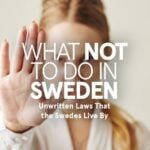 23 Unwritten Rules According to a Swede (What NOT To Do in Sweden)
23 Unwritten Rules According to a Swede (What NOT To Do in Sweden) Swedish Dinner Habits: A Complete Guide
Swedish Dinner Habits: A Complete Guide How Canada is Connected to the Nordics & Why It’s NOT Nordic
How Canada is Connected to the Nordics & Why It’s NOT Nordic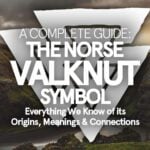 The Norse ‘Valknut’: Origins & Meanings of the Triangle Knot
The Norse ‘Valknut’: Origins & Meanings of the Triangle Knot

